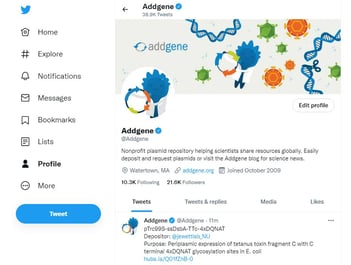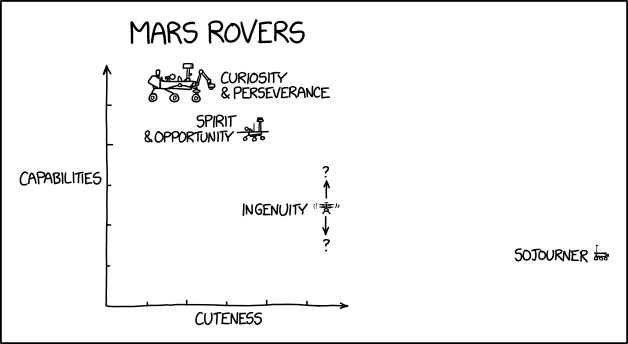[ad_1]
If you’re interested in sharing your science, one of the big questions you’ll be faced with is “how?” How are you going convey your information to your audience? There’s so many ways options available to today’s science communications: podcasts, blogging, videos, lectures, exhibits, social media… how do you choose?
Which way is the right way?
First of all, I want to put to rest a common misconception. I find personal bias often unintentionally plays a big role in what people think of as “the best way” to communicate their science, meaning that they will heavily evangelize for the mode of communication they connect best to. And that’s really natural – if it works so well for you, of course you want to share it with others! After all, won’t it work just as well for everyone else?
In truth, people are incredibly varied in how they prefer to consume information. Personally, I would much rather read the instructions than watch a how-to video. My dad, on the other hand, mastered the art of finding how-to videos on YouTube long before he learned (somewhat successfully) how to text or use Facebook. However you choose to communicate your science, some people will love it and others will avoid it like the plague. Instead of looking for The One Method to Rule Them All, consider the following four questions to figure out which method(s) work best for you, your audience, and your science.
  |
| Two of the platforms we use at Addgene: YouTube, for longer educational videos, and Twitter, for sharing updates, new deposits, and new blog posts! |
How to choose
Where is your audience?
It’s, quite frankly, much easier to go where your audience is than to try to convince your audience to come to you (a TikTok scicomm account aimed at octogenarians is going to be a hard sell!) Digital platforms often have demographic data of their users readily accessible via web searches; likewise, most in-person events and venues will have a solid understanding of their audience demographics. Do your research so you can go to where your audience already is.
You’ll also want to keep in mind that access and availability to resources (including the internet!) can vary depending on factors like socioeconomic status and geographic location. For example, not all social media platforms are available or used in all countries; not all areas of any given country have equal access to high-speed internet. Before you begin any work, make sure you know if your audience will be able to access your content.
What are you interested in?
 |
| Math, sarcasm, romance, and spacecraft! Image courtesy of xkcd.com |
Science communication should be fun and engaging for the communicator as well as the audience, so pick a mode of communication that you enjoy and that plays at least slightly to your strengths. Otherwise, you’re going to drop your project like a hot potato or burn yourself out trying to slog through unappealing work in your precious free time.
And don’t be afraid to think outside of the box. There are so many ways to communicate and I wholeheartedly encourage experimentation. You never know what’s going to work. After all, a stick-figure internet comic about math probably didn’t sound like a great idea to most people in 2005, but XKCD is pretty successful!
What resources do you have?
No matter the project, I can guarantee you that either resource or time restrictions (or both!) will be a major limiting factor at multiple points. Before you embark on a project, do your best to understand what kind of resources – including your time – will be required to produce an outcome you’re happy with. Know if you’ll need specialized equipment and/or expertise from the start, or if you can begin simply and build up to more complexity if needed. And since we live in the digital age, make sure to research any software you may need: cost or freeware alternatives and how steep of a learning curve it will be to get to the necessary level of proficiency.
What kind of content are you sharing?
Sometimes your subject matter will drive the kinds of communications you create. Wildlife biology and ecology can make for beautifully compelling photos and videos, while molecular, micro, and cell biology are often more suited for cartoons or graphics for visuals. However, it’s much more challenging to design a hands-on interactive activity using elephants than it is to design one demonstrating mitosis.
Consider also the amount and type of information you want to convey. Small tidbits and fast/fun facts are easy and engaging on social media, but deep dives are often more accessible when communicated via books or documentaries. Can you convey enough information to tell a compelling story in an image or do you need a full exhibit? In a five minute activity at a street fair, or a semester-long after school program? Comparing your desired outcome to the limitations and potential of your preferred platform before you start can save a lot of trouble in the long run.
Selecting the method
Once you’ve answered the above questions, you can create your short list of options and then pick whichever is most accessible or most appealing to you. And if you’re not sure what all the possibilities are, check out our table of commonly used modes of communications below!
| Format | Resource Requirements | Pros | Cons |
|
Video |
Medium to high | Uses visuals, audios, and text. Incredibly immersive and flexibility to visualize and contextualize. Can be distributed in digital or analog media formats. | Cognitively demanding format. Equipment, expense and expertise needed can increase exponentially with complexity. |
|
Podcasts |
Medium | Easy for audience to engage while multitasking. Easy to host guests remotely. Easy access from smartphones with low data requirements. | No visuals. Variety of hosting platforms can splinter audience. Primarily digital distribution (though radio is possible.) |
|
Written works |
Low | Flexible. Low barrier to entry. Ample distribution channels both digitally and physically. Easy to incorporate visuals if needed. | Traditional media formats are quite competitive while digital can be oversaturated. Transition from academic to informal writing can difficult. |
|
Photography |
Medium (high for microscopy) | Visually compelling. Easy to convey a large number of details without overwhelming your audience. Digital or print distribution. | Static. Can be difficult to convey an entire story or context via still images. Some things cannot be photographed or need text to properly contextualize. |
|
Graphics/cartoons (no words) |
Low | Visually compelling and flexible. Can be used to illustrate things that cannot be seen with the naked eye or to make things more accessible by including, highlighting, or omitting details. Digital or print distribution. | Static. Often requires both artistic and scientific training. Cartoons may be read as “for children” or may need text for audience interpretation. |
|
Infographics |
Low | Combines both words and images; especially useful for conveying and contextualizing data. Often overlooked as a means of scicomm. Digital or print distribution. | Typically limited to a single page of information. Primarily useful for data-focused stories. |
|
In-person lectures, presentations, etc… |
Low (except for space) | Real-time audience engagement and response. High connection levels and interaction. Can bring in things to be physically interacted with. | Public speaking is a common fear. Can be discouraging to build audience. Need space & higher entry barrier for audience versus passive digital consumption. |
|
Virtual lectures, presentations, etc.. |
Low (assuming a high resource geographic location) | Opportunity for real time engagement while allowing for recording/future access. Remote access possible | COVID-driven virtual drain. Audience needs high speed internet access. High probability of real-time technical difficulties |
|
Exhibits |
Medium to high | Audience can see, feel, and touch allowing for conceptualization not possible through other means. Easy to combine multiple types of media. | High barrier to entry (people have to enter a building or exhibit). No remote access; limited occupancy. Typically needs to be staffed. |
|
Mixed Media |
Medium to high | Combines pros of multiple channels/balance out cons. Flexible. Can allow people to learn in multiple ways from the same experience. | Can combines cons of multiple medias. Switching from one media type to another is cognitively demanding. Requires multiple areas of expertise. |
|
Social Media |
Low to high | Variety of options from text to video. Easy to target audiences. Low barrier to entry for both audience and communicators. Well-developed content creation platforms. |
Algorithms can make it difficult to reach people who are not already actively interested in scicomm. Difficult to do in-depth storytelling. Requires regular content production. Internet “trolls” |
More resources on the Addgene blog:
Summer SciComm Series: Cognitive Load
Intro to our Summer SciComm Series
[ad_2]
Source link


